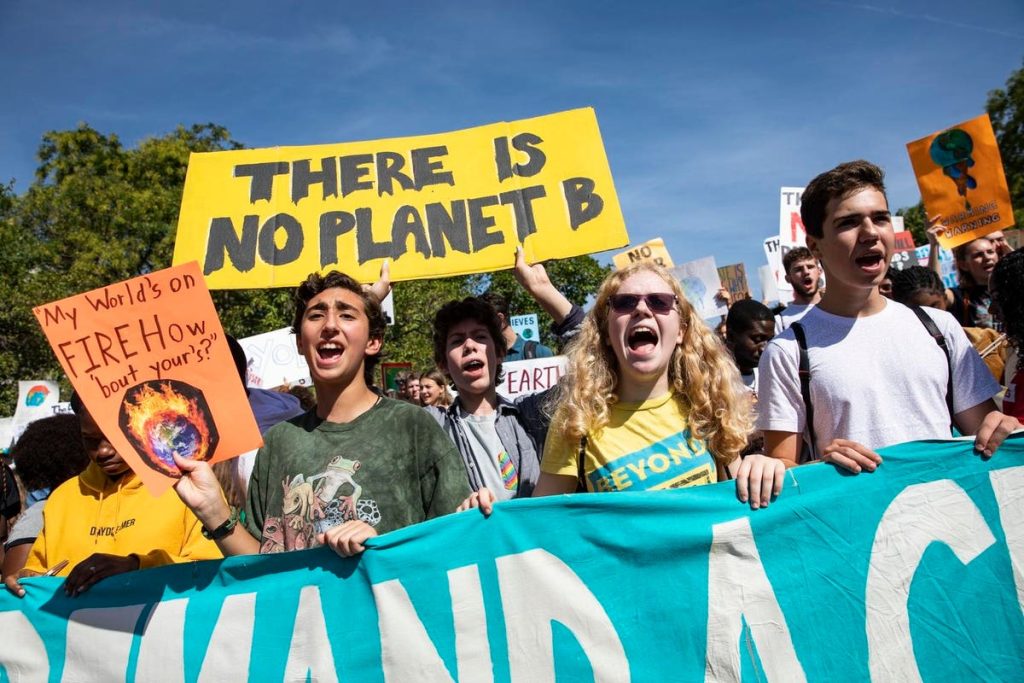If you channel the anger and frustration you feel due to climate distress, it could inspire you to take action and be a part of the climate activism movement, according to a new study. Having hope for the future despite the climate crisis is also linked to climate action. But researchers found that feelings like guilt, shame, sadness, and fear arising from climate grief were associated with reduced action taking.
“Hope is a feeling of possibility, the belief that a problem could be resolved, or conditions could change for the better. The emotion of hope appears to play a primary role in keeping a person engaged with a future, uncertain outcome,” the researchers wrote.
Published in the journal PLOS One, the study included 539 UK-based participants aged between 16 to 24 years old. Close to 61% of the participants were women. The majority were white (68.1%) and 15.8% were of Asian descent. Most of them (78.8%) lived in urban or semi-urban areas. Each participant completed an online survey that delved into whether they experienced climate distress or not. The questions also asked participants about their mental health and if they experienced distress or grief about the ongoing climate crisis. The participants were further told to mention whether or not they were involved in pro-environmental and climate actions before the Covid-19 pandemic began.
“Young people are disproportionately burdened by climate change. For instance, under current policies, individuals born in 2020 are two to seven times more likely to experience extreme weather events, particularly heatwaves, compared to people born in 1960,” the researchers noted in their paper.
“The fact that young people have fewer opportunities for their voices to be heard, or to participate in mitigation and adaptation actions (e.g., if they are not of voting age, or lack decision-making power over domestic pro-environmental actions) can further exacerbate their worry and distress,” they added.
Following the online surveys, the team reported that only 10.1% of the participants experienced high levels of climate distress. Around 37% of them experienced low levels of climate distress and the vast majority (53.2%) had moderate levels of climate distress.
The participants who self-reported moderate climate distress mainly belonged to higher socio-economic backgrounds and they were also experiencing at least one mental health condition. Whereas those who had high climate distress were far more likely to be women and gender diverse individuals. “There was no indication that the more highly distressed respondents had experienced more extreme weather impacts (personally or vicariously) or had more exposure to upsetting media coverage.
However, they did report being affected by environmental degradation of places they cared about. This was coupled with greater frustration over the perceived lack of action on climate change, a lack of personal agency, concern over one’s future, and feelings of guilt and shame,” the researchers noted.
“Climate distress may be a short-term or long-term risk factor for the development of mental health conditions. On the other hand, pre-existing conditions such as anxiety and depression, or their underlying drivers, may predispose young people to heightened climate distress,” they added.
Interestingly, the study highlighted that individuals with high levels of climate distress were also more likely to experience fulfillment, meaning, and mental health benefits from engaging in climate action.
“Climate distress therefore seems to be a multidimensional experience, a varying constellation of both subjectively positive and negative aspects,” they explained. “These findings echo previous observations that anger is a key driver of engagement with the climate crisis, and particularly in collective action. When angered (rather than fearful or saddened), people are more likely to see opportunities for action and engage with determination and courage.”
Read the full article here










